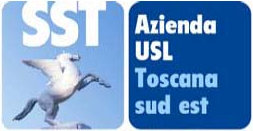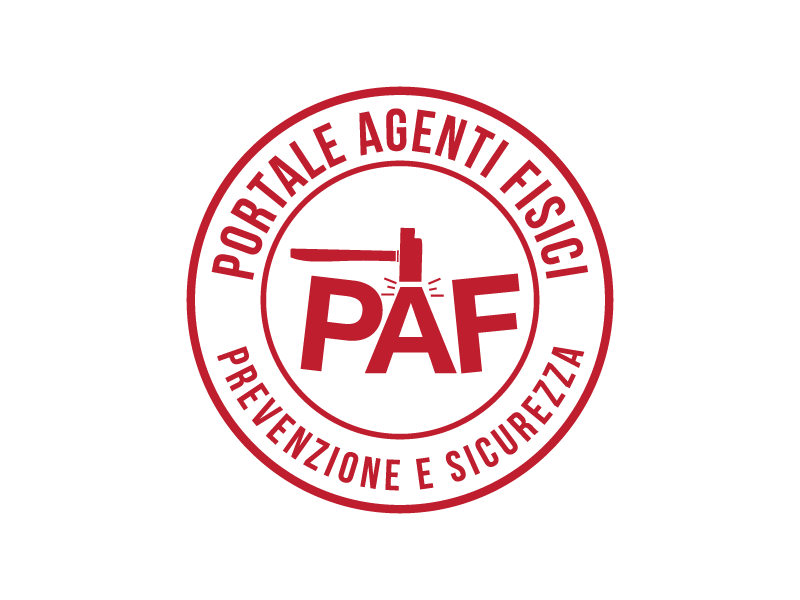Prevention and Protection - Solar UV Risk
When implementing protection measures it should always be taken into account that the UV radiation risk is closely connected to not just exposure, but also to individual factors. Therefore, protection measure implementation stemming from exposure assessment of workers should be performed on each individual with input including personal data (skin phototype, medications, pathologies), occupational activities (presence of photosensitisers, see Table 1) in close cooperation with the occupational physician. Specifically, outdoor workers, e.g. agricultural, fishery and construction workers, are often exposed to some of the photosensitisers listed in Table 1.
Skin phototyping gives indications on how that skin will react to solar exposure. Depending on the colour of the skin and hair, the susceptibility to erythema and how one tans, six different skin types have been identified (see Table 1). For the sake of brevity, skin types 1 (nearly albino) and 2 (very light skin) are very similar just as are types 5 (very dark skin) and 6 (black skin). The lower the skin phototype, the greater the probability of sunburn and the higher the risk of damage from solar exposure in particular, which may lead to skin tumours. In that a person's skin phototype is an expression of the features making up that individual, which influence their response to solar radiation, early assessment of this this factor in regard to worker's outdoor activities is primary.
|
Skin phototype 1 |
Red or blond hair. Pale white skin, often with freckles. |
|
Skin phototype 2 |
Blond or light brown hair. Fair skin. |
|
Skin phototype 3 |
Brown hair. Darker white skin. |
|
Skin phototype 4 |
Brown or dark brown hair. Light brown skin. |
|
Skin phototype 5 |
Black hair. Brown skin. |
|
Skin phototype 6 |
Black hair. Dark brown or black skin. |
PERSONS PARTICULARLY AT RISK
-
Pregnant women: in the absence of any reliable information from scientific literature, it is the Occupational Physician's duty to assess the necessity of any specific protection measures. Special attention should be given to the possible synergistic action of microclimatic conditions and UV radiation
-
Albinos and skin types 1-2
-
Collagen disease carriers (scleroderma and lupus erythematosus in its different forms, dermatomyositis, polyarteritis nodosa, Wegener's syndrome, antiphospholipid syndrome etc.). Among dermatosis exacerbated by light, the behaviour of discoid lupus erythematosus is well known: its exacerbation due to solar exposure is a dreadful phenomenon, also because of the possibility that exposure to sunlight induces the systemic form of the disease.
-
Persons under long-term or cyclic treatment with photo sensitising medications (e.g. antibiotics such as tetracyclines and fluoroquinolones; non-steroidal anti-inflammatory drugs such as ibuprofen and naproxen; diuretics such as furosemide; hypoglycaemic drugs such as sulfonylurea, psoralen, retinoic acid and aminolevulinic acid; neuroleptics such as phenothiazines and antiarrhythmics such as amiodarone); see Table 1.
-
Persons affected by iris and pupil disorders (iridocoloboma, aniridia and mydriasis, Adie's pupil).
-
Persons with drusens (colloidal bodies) due to exposure to blue light (from highly reflected visible light: outdoor work practices at sea or on snow/ice or near marble)
-
Workers with pre-malignant or malignant skin lesions.
-
Workers affected by photo-induced or photo-aggravated skin pathologies due to exposure to UV radiation These pathologies include very rare afflictions such as xeroderma pigmentosum, as well as very common disorders such as polymorphous light eruption.
For the purposes of health surveillance procedures, workers who have had an artificial lens implantation (IOL, Intra Ocular Lens) must be considered particularly sensitive to photochemical retinal damage, in particular due to outdoor exposure to high levels of reflected visible light (work practices in marble quarries, on ice/snow and on the water)
Table 1 – Photosensitisers (ICNIRP 2007)
|
AGENTS |
Incidence |
Type of Reaction |
Effective |
|
|
Photosensitising Agents after administration/local contact |
||||
|
Sulphonamides and associated chemical products (sunblocks, optical brighteners) |
n.d.* |
phototoxic and photoallergic |
290 - 320 nm |
|
|
Disinfectants (salycilanilide compounds in soaps and deodorants) |
n.d. |
phototoxic and photoallergic |
290 - 400 nm |
|
|
Phenothiazine (creams, dyes and insecticides) |
n.d. |
phototoxic and photoallergic |
320 nm - Visible |
|
|
Dyes |
n.d. |
phototoxic hyperpigmentation |
Visible |
|
|
Coal tar and coal tar derivatives (phenolic compounds) |
n.d. |
phototoxic |
340 - 430 nm |
|
|
Essential oils (perfumes and eau de cologne) |
n.d. |
phototoxic hyperpigmentation |
290 - 380 nm |
|
|
Furanocoumarin compounds (psoralens) |
n.d. |
phototoxic hyperpigmentation |
290 - 400 nm |
|
|
Cadmium sulphide (tattoos) |
n.d. |
phototoxic |
380 - 445 nm |
|
|
Photo sensitizing Agents after oral or parenteral administration |
||||
|
Amiodarone |
High |
phototoxic |
300 - 400 nm |
|
|
Thiazide based diuretics |
Medium |
photoallergic |
300 - 400 nm |
|
|
Chlorpromazine and associated phenothiazines |
Medium |
phototoxic and photoallergic |
320 - 400 nm |
|
|
Nalidixic acid |
High |
phototoxic |
320 - 360 nm |
|
|
Non-steroidal anti-inflammatory drugs |
Low |
phototoxic and photoallergic |
310 - 340 nm |
|
|
Protriptyline |
High |
phototoxic |
290 - 320 nm |
|
|
Psoralens |
High |
phototoxic |
320 - 380 nm |
|
|
Sulphonamides (bacteriostatics and antidiabetics) |
Low |
photoallergic |
315 - 400 nm |
|
|
Tetracycline (antibiotics) |
Medium |
phototoxic |
350 - 420 nm |
|
TECHNICAL AND ORGANISATIONAL PREVENTION MEASURES
-
Environmental photo-protection: where possible, always shield from the sun with awnings or other covers.
-
Where possible, adjust work hours so that during the part of the day with the highest levels of UV intensity (from 11:00 am to 3:00 pm or from 12:00 am to 4:00 pm during daylight savings time) work done indoors or in the shade is given priority, with work outdoors scheduled for mornings or evenings, when UV exposure is lower.
-
Always take lunch or other breaks in the shade.
In regard to this always consider the following:
-
Even if the sky is overcast, there is exposure to UV solar radiation. In fact clouds do not block ultraviolet rays. Wind and clouds, by reducing the feeling of heat on the skin, might lead one to believe that there is no risk of sunburn. Actually this is not true. It is therefore necessary to protect one's self even under these conditions.
-
It is also necessary to seek protection from the sun's rays in autumn and winter and not just in spring and summer. At the latitudes of the Tuscany Region, protection is required from March to October in outdoor environments with low or mild reflected radiation (ground, water, cement, asphalt, grass) and in all months of the year, including November to January for outdoor work wherever there is a high level of reflected radiation (snow, ice, white marble) with clear skies.
-
Glass nearly blocks all UV radiation transmission.
-
Exposure to the sun when outside for recreational purposes can cause damage that is in addition to damage that occurs while working.
Protective Apparel
Skin protection
It is a recommended to wear a hat with a broad, circular brim (at least 8 cm wide), which will not only provide good protection to the head but also to the ears, nose, and neck. Legionnaire hats, with the protective flap over the neck are particularly effectivet. On the other hand, baseball caps with a bill - widely used when working outdoors - do not protect the ears and neck, which are particularly exposed to sunlight and must be protected from UV radiation by other means (see Fig. 1).
Hats should be made of UV resistant fabric.
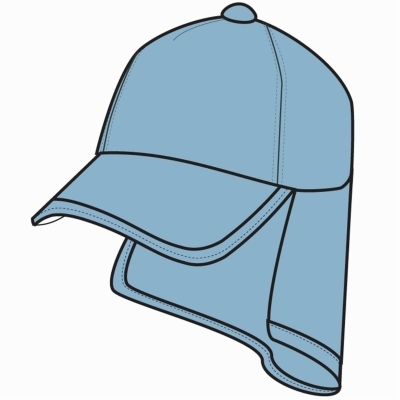
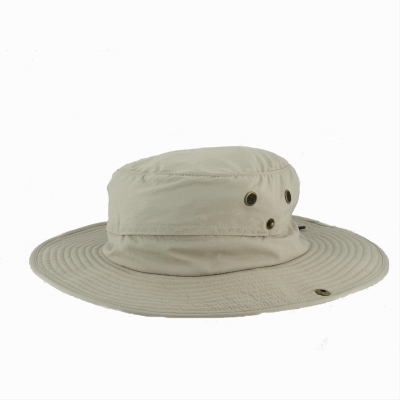
Figure 1
When working in the sun, even if hot, even if hot, one should not remove one’s shirt: never work bare-chested or with just shorts . Light, loose fitting clothing that does not hamper movements should be worn: shirts with long sleeves and collars and long trousers. The fabrics should guarantee good protection from UV rays and must be cool in the summer. The ability of clothing and hats, to block ultraviolet rays depends on several factors:
Humidity: wet fabric provides less efficient protection from UV rays than dry fabric. Dark fabric protects better that light: the structure of its fibres tends to absorb rather than transmit different UV rays. Acrylic fabrics protect better than silk and silk better than cotton. Wool provides good protection, but it is not practical during the summer months. A good combination is cotton/polyester, which is cool and protects well. A cotton T-shirt provides less protection, allowing up to 30% of UV radiation through.
Closely woven fabrics are much more effective for blocking UV rays than those loosely woven. The denser and thicker a fabric is, the greater the protection it provides against UV rays. If images are visible through the fabric when it is held in front of a lamp, the level of protection is very low. If only light filters through the fabric, the level of protection is moderate. If no light filters through, the level of protection is excellent. As a matter of fact, wherever light passes through, UV radiation also passes.
For several years now, it has become common practice in some Countries, such as Australia, to provide a UPF (Ultraviolet Protection Factor) label on clothing, which indicates the level of protection offered by the fabric against ultraviolet radiation in the same way as the SPF (Sun Protection Factor) ratings are given to suntan lotions. If a fabric has a UPF rating of 30, the level of protection of the skin underneath is 30 times greater than skin exposed to the sun without protection. Anti-UV fabrics with very high levels of protection and accepted by workers, are now also being manufactured in Italy. In order to identify and guarantee the quality of UV protective clothing UNI has published the UNI EN 13758 technical standard. These standards specify a test procedure to determine the ability of fabrics to filter UV radiation, so as to assign them a UPF rating. The standards have also set out the identification of those garments with a UPF rating greater than 40 using a pictogram label. In this manner people may choose specific clothing that offers protection against exposure to UVA and UVB rays. Testing is conducted in specialised laboratories with specific instruments.
Anti-UV apparel compliant with UNI standards are easily recognized. They bear the CE mark and have along with the pictogram in Figure 2 - (yellow sun with black shadow, silhouette and characters) - the number of the standard, the indication of the "40+" protection factor and other information (all of this is usually found on the label or on the information leaflet that accompanies the product).
For example, these sentences below:
• “Sun exposure causes skin damage.”
• “Only covered areas are protected”
• “Provides UVA + UVB protection from the sun”
Note that the garment's protection level is reduced if it is torn, worn, damaged or wet. Moreover, the standard recommends that an information leaflet be attached to the product in order to explain the dangers of exposure to UV radiation. It is important to point out that this apparel is generally lightweight, practical, comfortable, already on the market and easily available in shops (especially shops that sell sportswear) and in large shopping centres.
The minimum requirements for the fabric, specified in the standard, ensure sufficient protection for all situations (except the most extreme, which are unlikely at Italian latitudes), whilst the clothing's design specifications ensure that manufacture and marketing are not penalized. On the contrary, its special features enhance the value of the product.
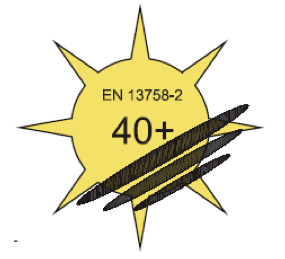
Figure 2 - UPF 40+ pictogram for anti-UV garments compliant with the EN 13758-2 standard
Sunblock creams
Sunblock products (creams with solar filters) have shown their effectiveness in reducing the incidence both of epithelial neoplastic skin disorders and of other conditions known as photo ageing. It should also be noted that, as is the case with most outdoor work - especially agriculture, gardening and construction - due to possible photoallergic and phototoxic effects associated to simultaneous exposure to chemical (e.g. pesticides) or plant substances (e.g. bergamot, umbelliferae etc.) - the choice of the sun block cream should be made together with one's physician. It is also important to check the SPF (Sun Protection Factor) or IP (Index of Protection) on the label of sun block products. The use of total protection sticks for nose and lips is suggested especially for those parts of the face more exposed to reflected light. Note that protective hats - even with a wide brim - protect only from direct sunlight.
The SPF of a sun block product is established by measuring the solar exposure time necessary to induce erythema on a skin area to which the product has been applied and on an area without protection. The ratio between the two times is the product's SPF. Therefore, an SPF of 10 means that that sunblock product multiplies the unprotected exposure time by a factor of ten before inducing erythema. The higher the SPF number is, the more effective the protection. Note, however, that the amount of time required before inducing erythema varies from one person to another, depending on the skin phototype.
Eye protection:
The eyes should be protected with sunglasses. It is important that sunglasses one chooses provide good protection from ultraviolet radiation. This is usually ensured by the statement "Blocks 99% of ultraviolet rays" on the package. One should choose products that comply with the harmonised EN 1836 standard, as this represents the best tool for meeting obligatory safety requirements set down by law. The manufacturer that intends to market sunglasses must in any case put the CE mark on the product. This way the manufacturer guarantees that the product meets all essential safety requirements provided for by the law.
By adding the indication that the product is compliant with the EN 1836 standard the manufacturer also gives consumers an additional guarantee: i.e. safety has been achieved through compliance with a recognized technical standard. Furthermore, the manufacturer has the obligation to prepare an information leaflet to be provided with the product. Apart from the manufacturer's name and address, the leaflet should contain any other useful information (e.g., maintenance and cleaning instructions, meaning of the marks, etc.). The leaflet should also be written clearly and precisely in at least one of the official languages of the country where the product is distributed. Retailers have the duty to sell only glasses bearing the CE mark and an information leaflet. The CE mark must be unmistakable, indelible, legible and clearly visible on the product. The sunglasses should also adhere well to the face so as to not permit UV rays to enter from the top, bottom or the sides of the lenses.
Worker Training and Information
In the process of occupational health and safety protection management the Directive places particular attention to worker training and informative briefing about specific risks found in the workplace and applicable prevention and protection measures. The Directive provides that training be provided to the worker upon hiring and be regularly updated in the event of change of duties or a change in the work cycle involving new health risks such as the introduction of new substances or equipment. The aim of this training should be that of enabling the worker to acquire complete awareness of the risks and the procedures required to prevent them. This training process should be structured in such a manner that the worker is not only briefed on standards to be complied with, but that the same worker be an active participant in maintaining the health and safety in the workplace for him/herself and everyone else as well. Therefore, in regard to those who work aboard a fishing boat, the information about the risk of exposure to UV rays should specifically hinge on the following points:
-
The risk of exposure to UV rays: in particular how exposure changes under different weather conditions and at different times of the day
-
Its effects on the health (neoplastic and not)
-
Individual factors of hyper-susceptibility (phototype, familiarity, use of certain drugs)
-
Prevention methods to be adopted
The training content should instead be centred on the following aspects:
-
Specific conduct to adopt in regard to solar exposure whether at work or not
-
Suitable use of personal protective equipment (anti-UV clothing, glasses, sun creams)
-
-Suitable use of collective protective equipment: awnings, and shaded work areas
-
Regular dermatological examinations
In this regard it is important that workers clearly comprehend these concepts:
-
Self-examination of the skin, performed regularly, enables early detection of skin tumours, at a point when they are more easily treated and the probability of recovery is far greater
-
The best time to perform self-examination of the skin is after bathing or showering.
-
Examination of the skin is best done whilst completely nude in a well-lighted place, before a large mirror so that one may examine the front part of the body closely
-
The less accessible areas, such as the back, neck, ears, etc., may be examined more easily by turning your back to the large mirror and using a small hand mirror; assistance by a family member is always useful
-
All of the areas of the body need to be checked, including the scalp (this may be done using a hair dryer or a comb to shift the hair)
Nonmelanocytic tumours (spinocellular and basocellular epithelioma) usually appear in areas exposed to the sun. Workers should be trained to check and pay attention to the presence of reddened and scaly lesions or small sores that do not heal on the face, head, ears, neck, arms and hands. Special attention should be given to small apparently innocuous scabs, which once removed tend to return without ever really healing.
It is important to always check one's moles paying attention to any changes in those already present or to the growth of new moles. Melanoma can occur on a mole that has been present for some time or on an area of the skin without moles.
If a mole with the following characteristics is noted, it is best to consult a dermatologist:
-
Irregular shape, with one half of the lesion having a different size than the other half
-
Irregular edges, scalloped, with a map-like appearance
-
Colour not uniform, with the presence of several colours (black, brown, red, pink), or colour variations
-
Diameter greater than 6 millimetres or an increase in size over the last few months
-
Changes in appearance, dimensions (enlargement) and spontaneous bleeding
In the event of changes in a new mole, the start of a mole, the presence of lesions that do not heal or any other suspicious variation, always consult your dermatologist. These suggestions are valid for everyone and even more so for those who have worked on a fishing boat for their entire lives.
In regard to training the following points should be highlighted:
-
There is no precise dose-response relationship between UV radiation exposure and sunlight induced pathologies, specifically neoplastic diseases. Therefore it is not possible to set a threshold value below which such pathologies do not occur
-
The occurrence of sunlight induced pathologies is also influenced by a person's constitution (phototype and family history)
-
Even recreational exposure to solar radiation is a source of risk
-
There may also be other professional factors that can cause skin pathologies similar to those induced by sunlight (e.g. spinocellular epithelioma caused by exposure to polycyclic aromatic hydrocarbons)






